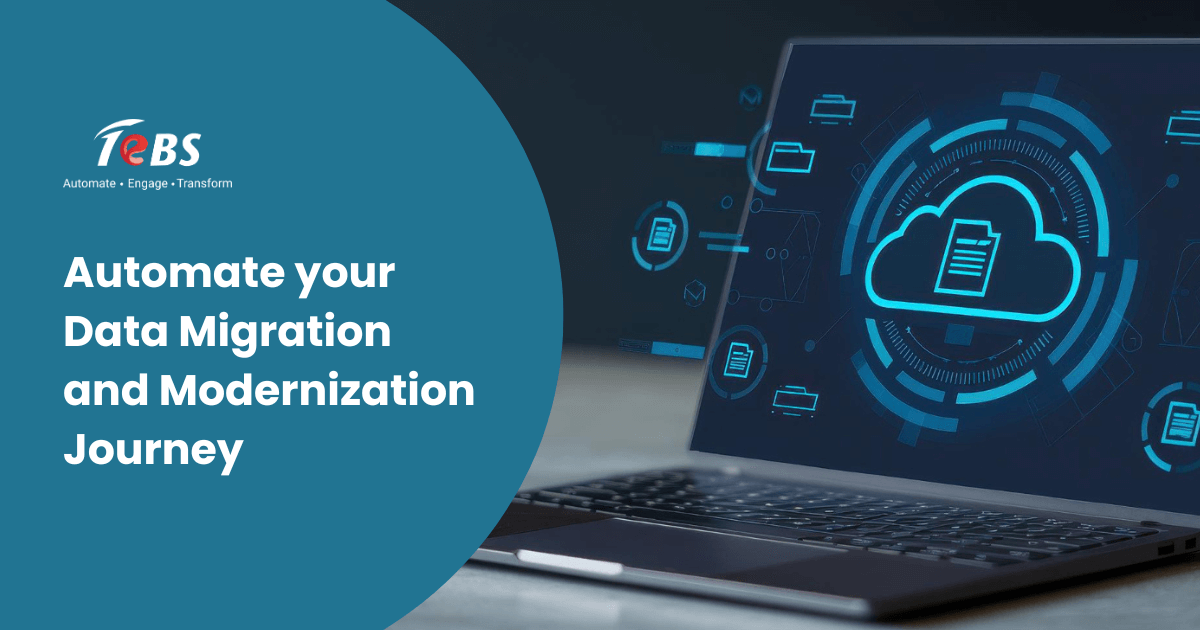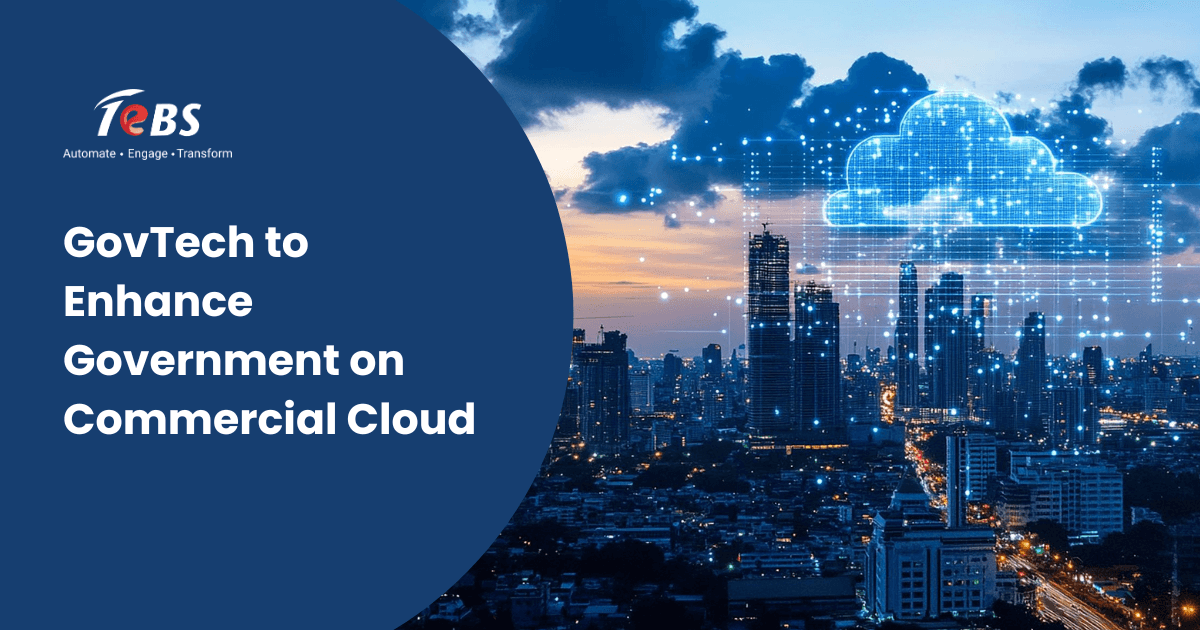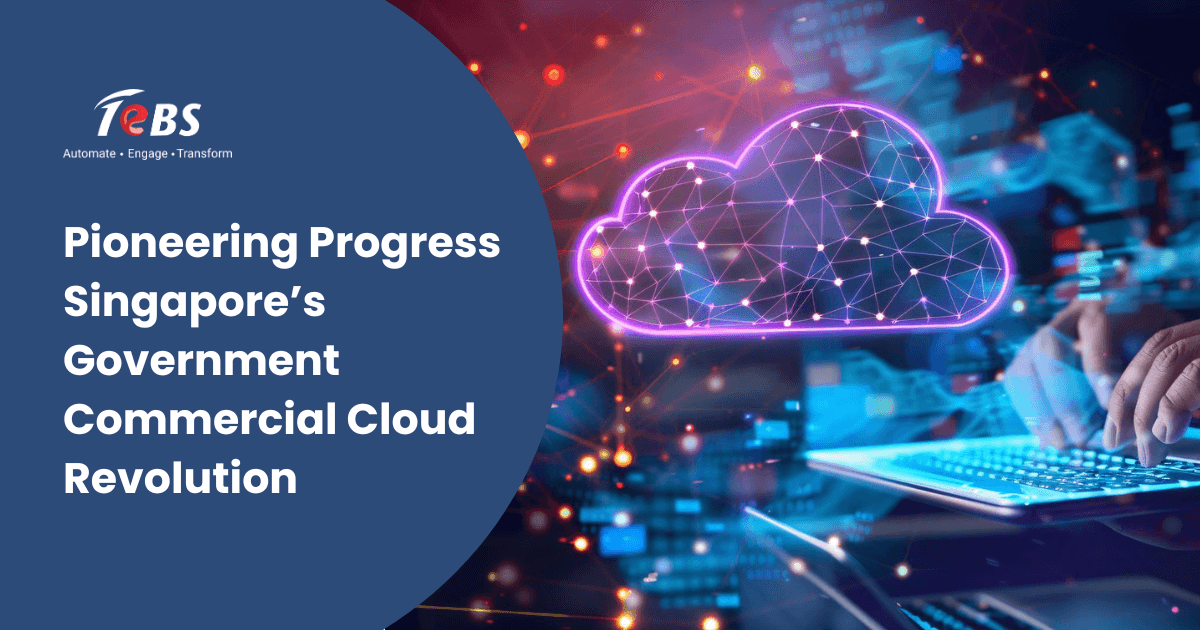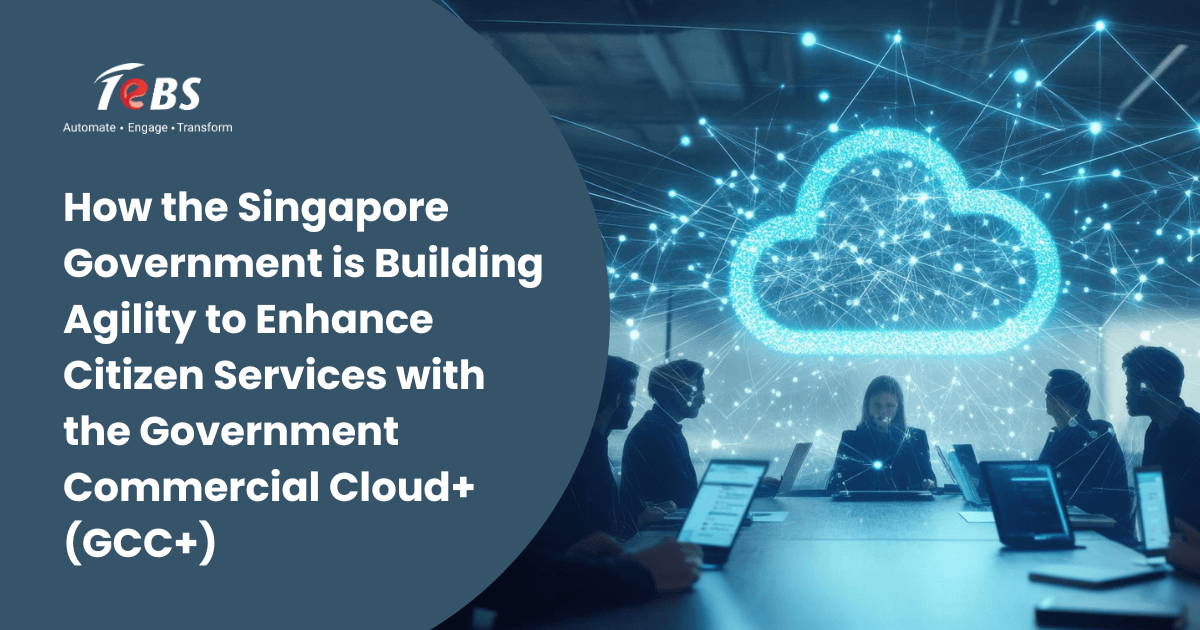Summary
Introduction
Organizations are generating and storing data at an unprecedented scale, but legacy systems often hold this information in silos, making it difficult to extract business value. As companies move towards innovation-driven models, data migration and modernization have become crucial enablers of agility, scalability, and cost optimization. The transition, however, can be complex—ranging from assessing existing systems and ensuring compliance to orchestrating smooth movement without disrupting operations. AI Automation plays a transformative role here, streamlining the entire process and reducing the risks associated with traditional manual approaches.
Cloud platforms are at the center of this transformation, offering advanced capabilities that allow enterprises to modernize infrastructure, unify their data landscape, and harness the power of AI and analytics. With AI services by TeBS, organizations can integrate intelligence into every stage of their migration and modernization journey. Automating the migration process ensures that businesses not only move to the cloud efficiently but also set a strong foundation for ongoing innovation.
Why Automate Data Migration?
Manual data migration has historically been resource-intensive, error-prone, and slow. As businesses scale, these challenges grow exponentially. Automation addresses these gaps by delivering faster, more accurate, and secure migration pathways.
Key Benefits of Automation:
1. Speed and EfficiencyAutomated workflows accelerate data transfer by eliminating repetitive manual tasks, ensuring large datasets move seamlessly to the cloud with minimal downtime.
2. Error ReductionBy leveraging AI-driven validation, automation minimizes risks such as data corruption, duplication, or incomplete transfers, ensuring integrity throughout the process.
3. ScalabilityWhether migrating a few terabytes or petabytes, automated tools can scale effortlessly to handle growing data volumes without straining resources.
4. Cost OptimizationStreamlined migrations reduce the need for extended manual oversight, cutting down on operational costs while optimizing infrastructure usage in the cloud.
5. Security and ComplianceAutomated migration tools come equipped with encryption and audit trails, ensuring sensitive data is safeguarded while adhering to regulatory requirements.
Understanding the Data Modernization Journey
Data modernization goes beyond moving information from legacy systems to the cloud—it transforms how data is stored, managed, and utilized for decision-making. It encompasses the adoption of modern architectures, advanced analytics, and AI-driven insights.
Core Elements of Data Modernization:
- Cloud Adoption: Transitioning from on-premises systems to flexible cloud platforms.
- Data Integration: Breaking down silos and unifying data across multiple systems for a single source of truth.
- Advanced Analytics and AI: Leveraging cloud-native tools to derive predictive and prescriptive insights.
- Agility and Innovation: Enabling faster development cycles, new product launches, and improved customer experiences.
Challenges in Data Migration and Modernization
While the benefits are compelling, organizations often face several roadblocks in their journey:
1. Legacy System ComplexityMany organizations rely on outdated applications that lack direct compatibility with modern cloud platforms.
2. Downtime ConcernsProlonged migration windows can disrupt critical business operations if not managed properly.
3. Data Security RisksSensitive information moving across environments may face vulnerabilities without robust safeguards.
4. Data Mapping and TransformationConverting legacy data into modern formats requires deep domain knowledge and precision. TeBS provides AI data engineering solutions to simplify complex transformations and ensure data integrity.
5. Compliance RequirementsIndustries like healthcare, finance, and public services must adhere to strict regulatory frameworks when migrating data.
Automation significantly reduces these challenges by providing structured frameworks, intelligent monitoring, and predefined compliance safeguards.
Learn how IT can play a stronger strategic role during such transformations in our blog How Cloud Migration Can Turn IT into a Trusted Business Partner.
Automating the Data Migration Process: A Step-by-Step Approach
1. Assessment and Planning
Automation begins with discovery tools that scan existing environments to assess dependencies, workloads, and readiness. This ensures clarity on which datasets, applications, or systems should be prioritized.2. Data Classification
Automated solutions categorize data based on usage, sensitivity, and business criticality. This helps determine what should be migrated, archived, or transformed.3. Migration Strategy Selection
Automated platforms offer different strategies—such as lift-and-shift, re-platforming, or re-architecting—based on the enterprise’s long-term goals.4. Execution with Automation Tools
AI-enabled tools orchestrate data transfer, applying encryption, monitoring performance, and validating integrity in real time. Parallel processing accelerates movement without disruption.5. Validation and Testing
Automation ensures post-migration checks—data consistency, application performance, and compliance requirements—are seamlessly executed with minimal manual intervention.6. Continuous Monitoring
Post-migration, automated dashboards track system performance, storage utilization, and data accessibility, ensuring smooth operations.Tools and Technologies Empowering Automation
Cloud service providers and specialized platforms offer a wide range of automation-focused tools to simplify the migration and modernization journey.- Microsoft Azure Migrate: Comprehensive assessment, dependency mapping, and seamless migration.
- AWS Migration Hub: Centralized migration tracking across applications and services.
- Google Cloud Migrate for Compute Engine: Automated VM migration with minimal downtime.
- Informatica Cloud Data Integration: AI-powered data management and modernization.
- TeBS’ IntaSenz Platform: Designed to simplify data integration, migration, and AI-powered insights for enterprises, enabling faster adoption of cloud-native solutions.
These solutions not only enable seamless migration but also lay the groundwork for advanced analytics and intelligent automation.
According to Microsoft’s Cloud Migration and Modernization guide, Azure Migrate provides an end-to-end platform for modernization.
Modernization Through Automation: Unlocking New Possibilities
1. Cloud-Native Architectures
Automating modernization allows businesses to re-architect legacy applications into microservices and containerized deployments, enabling greater agility and innovation.
2. Real-Time Analytics
By modernizing data pipelines through automation, businesses gain the ability to process and analyze information in real time, unlocking opportunities for immediate decision-making.
3. AI and Machine Learning Enablement
Automation integrates AI into data systems, helping organizations leverage predictive analytics, natural language processing, and image recognition for advanced capabilities.
4. Enhanced Customer Experiences
Automated modernization allows enterprises to deliver hyper-personalized services by utilizing unified customer data and insights.
5. Business Continuity and Resilience
Automated failover, backup, and monitoring systems ensure uninterrupted operations even during disruptions.
Industry Use Cases
Public Sector
Government agencies rely on automation to securely migrate citizen records to the cloud, ensuring compliance while enabling faster public service delivery.Healthcare
Hospitals use automated data migration to unify patient records, improving interoperability across systems and enhancing patient care outcomes.Manufacturing
Factories modernize legacy ERP systems through automated migration, integrating IoT and analytics for smarter supply chains.Financial Services
Banks automate migration to ensure secure, compliant transfer of sensitive data, while modernizing systems for AI-driven fraud detection.Nonprofits
Charitable organizations leverage automation to move donor and beneficiary data to the cloud, improving transparency and reporting.Similarly, TeBS partnered with NHCS to enhance digital infrastructure, enabling secure and scalable data migration.
These real-world applications highlight how automation not only simplifies migration but also drives measurable business impact across sectors.
Best Practices for Automating Data Migration and Modernization
1. Define Clear Objectives
Establish whether the focus is cost savings, innovation, compliance, or scalability.
2. Adopt a Phased Approach
Break down the migration into manageable stages to reduce risk and ensure smooth progress.
3. Leverage Proven Tools
Choose automation platforms that align with the organization’s existing ecosystem and compliance needs.
4. Prioritize Data Security
Use encryption, access controls, and compliance checks at every stage of migration. With TeBS AI cloud and security services, enterprises gain end-to-end protection throughout their migration journey.
5. Engage Experienced Partners
Collaborating with experts ensures technical precision and reduces the burden on internal teams.
Future of Automated Data Migration and Modernization
The future points towards greater integration of AI, machine learning, and autonomous systems in the migration process. Intelligent platforms will not only execute migrations but also self-optimize, predict challenges, and provide prescriptive recommendations. As hybrid and multi-cloud environments become the norm, automation will act as the bridge that harmonizes diverse systems while accelerating innovation.
Gartner’s Public Cloud Migration Strategies highlight that future-ready enterprises will rely on automation as a bridge to hybrid and multi-cloud ecosystems.”
Conclusion
Automating your data migration and modernization journey is no longer optional—it is the foundation of building a future-ready enterprise. By eliminating inefficiencies, reducing risks, and enabling seamless transformation, automation ensures that your cloud journey drives measurable business value. Whether the goal is improving scalability, harnessing advanced analytics, or ensuring compliance, automation provides the tools to move faster, smarter, and more securely.
TeBS has been helping organizations across industries embrace cloud migration and modernization with confidence, leveraging automation and AI-powered platforms to deliver successful outcomes. Partnering with us ensures your business can maximize the benefits of modern cloud ecosystems while focusing on growth and innovation.
Ready to accelerate your migration journey? Connect with our experts at [email protected] to start your transformation today.
Frequently asked questions
1. How does automation improve data accuracy and reduce errors?
Automation minimizes manual data entry, enforces validation rules, and ensures consistent processing, reducing human errors.
2. Which tools are best for automated data migration and modernization?
Top tools include Microsoft Azure Data Factory, Informatica, Talend, AWS Glue, and Qlik Replicate.
3. How does AI support the data modernization journey?
AI helps by identifying data patterns, automating classification, detecting anomalies, and optimizing data transformation processes.
4. Can automation reduce downtime during cloud migration?
Yes, automation enables staged migrations, real-time syncing, and rollback mechanisms, minimizing downtime.
5. What industries benefit most from automated data migration?
Finance, healthcare, retail, manufacturing, and government sectors gain the most due to large and complex datasets.
6. What is the future of automation in data migration and modernization?
Future trends include AI-driven intelligent migration, self-healing pipelines, predictive analytics, and fully autonomous data operations.





